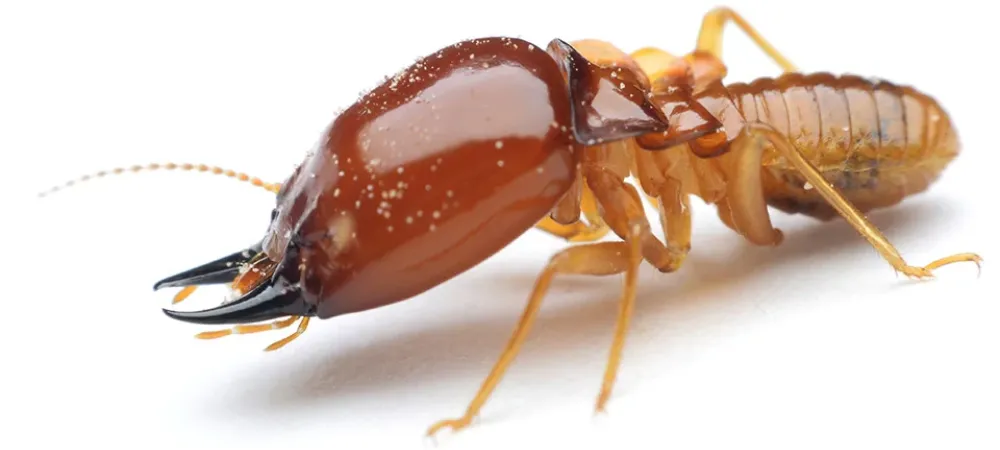Everything You Need to Know About Termites in 2025

Are Termites Dangerous?
Termites are more annoying than dangerous, at least to people. They don’t bite or sting, but can easily get caught in hair, clothes, and pose a general nuisance if you get caught in the middle of a swarm. Termites can, however, cause structural damage that makes your home dangerous to be in, so it’s important to look out for signs of termite activity.
Can Termites Get in Your Hair?
Signs of Termite Activity
Termite infestations often go unnoticed for long periods of time, giving these sneaky pests the perfect opportunity to wreak havoc on your home. Knowing the warning signs helps you catch termites before it’s too late, making termite treatment easier and protecting your home and wallet. Signs of termite activity include:
- Peeling or bubbling paint that looks like water damage.
- Hollow-sounding, damaged wood.
- Buckling or squeaky floorboards.
- Ill-fitting doors and windows due to warped frames.
- Discarded wings near windowsills and doors.
- Mud tubes on the exterior of your home.
Where Do Termites Live?
Different species of termites live in different places. While there are over 50 different kinds of termites in North America, they can each be categorized into three main groups: subterranean termites, dampwood termites, and drywood termites. During a termite inspection, your exterminator will be able to identify the type of termite on your property and recommend the best treatment.
Subterranean Termites
As their name suggests, subterranean termites live underground and travel using mud tubes that keep them protected from the hot sun. They typically feed on wood that’s touching the ground or partially underground, however they can use the mud tubes to climb your home’s foundation and gain access to the lumber inside.
Dampwood Termites
Dampwood termite colonies make their home in wood with high moisture content, typically wood that is in contact with the ground, near standing water, or around clogged gutters. This includes fallen trees, fence posts, and sheds. Although infrequent, they can also find their way inside your home.
Drywood Termites
Drywood termites build their nests in dry, non-decayed wood and require less moisture than other species. They can easily travel aboveground without becoming dehydrated, which allows them to infest your home, mainly in the attic, wooden support beams or framing, and hardwood floors, and even furniture.
How to Prevent Termites
Termite infestations can happen to anyone, but there are precautions you can take to reduce the likelihood that they will turn your home into their next meal. Steps you can do yourself include:
- Eliminating contact between wood and soil to reduce favorable conditions for termites.
- Keeping plants and mulch away from your foundation.
- Fixing leaky faucets, keeping gutters clear, and draining water away from your home to prevent excess moisture.
- Storing firewood or other lumber several feet away from your home.
How to Get Rid of Termites in 2025
Termite colonies can house thousands, even hundreds of thousands, of insects, so their numbers alone make it nearly impossible to eliminate them on your own. They’re also difficult to locate and hard to kill without the right tools, so it’s best to leave termite removal to the professionals.
Here at Myles Pest Services, our family-friendly termite treatment relies on the Sentricon® Always Active™ System, one of the most powerful products on the market. It works by delivering bait to the colony, quickly eliminating it without harsh chemicals or invasive traps. The Sentricon® system continues to monitor for termites 24/7, so you never have to worry about them making a comeback.
Contact us today to protect your home from termites! We service Grapevine, Bedford, Arlington, Euless and other Fort Worth surrounding areas. Check out the areas we service to see how we can help you!

